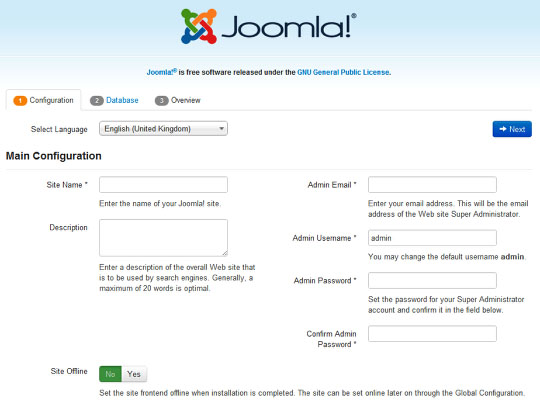
In this tutorial, we will show you how to install Joomla on Debian 11. For those of you who didn’t know, Joomla is one of the most popular Content Management Systems (CMSs) next to WordPress. With Joomla, you can create blogs, discussion forums, and other websites. It is written in PHP and uses MySQL as a database. It offers a wide range of features that make it a flexible content management system right out of the box. It comes with hundreds of free extensions that allow you to customize and extend the functionality.
This article assumes you have at least basic knowledge of Linux, know how to use the shell, and most importantly, you host your site on your own VPS. The installation is quite simple and assumes you are running in the root account, if not you may need to add ‘sudo‘ to the commands to get root privileges. I will show you through the step-by-step installation of Joomla CMS on a Debian 11 (Bullseye).
Prerequisites
- A server running one of the following operating systems: Debian 11 (Bullseye).
- It’s recommended that you use a fresh OS install to prevent any potential issues.
- A
non-root sudo useror access to theroot user. We recommend acting as anon-root sudo user, however, as you can harm your system if you’re not careful when acting as the root.
Install Joomla on Debian 11 Bullseye
Step 1. Before we install any software, it’s important to make sure your system is up to date by running the following apt commands in the terminal:
sudo apt update sudo apt upgrade
Step 2. Installing the LAMP stack.
A Debian 11 LAMP server is required. If you do not have LAMP installed, Please read our previous tutorial to install LAMP Server on Debian 11.
Step 3. Installing Joomla on Debian 11.
Now we download the latest version of the Joomla package using the following wget command in the terminal:
wget https://downloads.joomla.org/cms/joomla4/4-0-4/Joomla_4-0-4-Stable-Full_Package.zip
Next, create a directory for Joomla inside the Apache web root:
mkdir /var/www/html/joomla
Then, run the following command below to extract the downloaded file to the Joomla directory:
unzip Joomla_4-0-3-Stable-Full_Package.zip -d /var/www/html/joomla
We will need to change some folder permissions:
chown -R www-data:www-data /var/www/html/joomla chmod -R 755 /var/www/html/joomla
Step 4. Configuring MariaDB.
By default, MariaDB is not hardened. You can secure MariaDB using the mysql_secure_installation script. You should read and below each step carefully which will set a root password, remove anonymous users, disallow remote root login, and remove the test database and access to secure MariaDB.
mysql_secure_installation
Configure it like this:
- Set root password? [Y/n] y - Remove anonymous users? [Y/n] y - Disallow root login remotely? [Y/n] y - Remove test database and access to it? [Y/n] y - Reload privilege tables now? [Y/n] y
Next, we will need to log in to the MariaDB console and create a database for the Joomla. Run the following command:
mysql -u root -p
This will prompt you for a password, so enter your MariaDB root password and hit Enter. Once you are logged in to your database server you need to create a database for Joomla installation:
MariaDB [(none)]> CREATE DATABASE joomladb; MariaDB [(none)]> CREATE USER 'joomlauser'@'localhost' IDENTIFIED BY 'your-strong-password'; MariaDB [(none)]> GRANT ALL PRIVILEGES ON joomladb.* TO 'joomlauser'@'localhost'; MariaDB [(none)]> EXIT
Step 5. Configuring Apache.
Now we create a new VirtualHost to better manage the Joomla:
nano /etc/apache2/sites-available/joomla.conf
Add the following file:
<VirtualHost *:80>
ServerAdmin admin@your_domain.com
DocumentRoot /var/www/html/wordpress
ServerName your-domain.com
<Directory /var/www/html/wordpress>
Options FollowSymlinks
AllowOverride All
Require all granted
</Directory>
ErrorLog ${APACHE_LOG_DIR}/your-domain.com_error.log
CustomLog ${APACHE_LOG_DIR}/your-domain.com_access.log combined
</VirtualHost>
Save and close, then restart the Apache so that the changes take place:
sudo a2ensite joomla.conf sudo a2enmod rewrite sudo systemctl restart apache2
Step 6. Accessing Joomla Web Interface.
Once successfully installed, open your web browser and access the Joomla web interface using the URL http://your-domian.com. You will be redirected to the following page:

Congratulations! You have successfully installed Joomla. Thanks for using this tutorial for installing the latest version of the Joomla content management system (CMS) on Debian 11 Bullseye. For additional help or useful information, we recommend you check the official Joomla website.